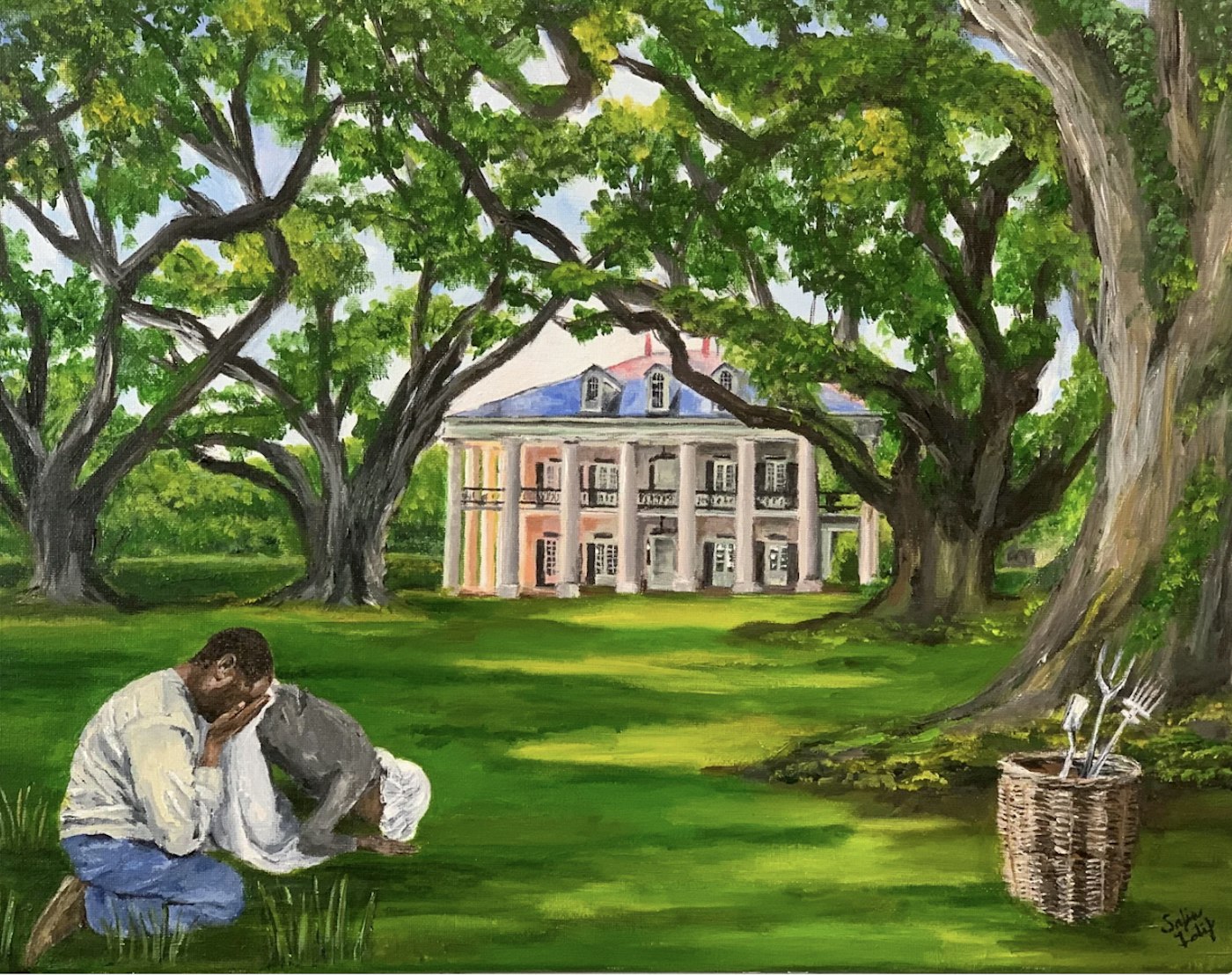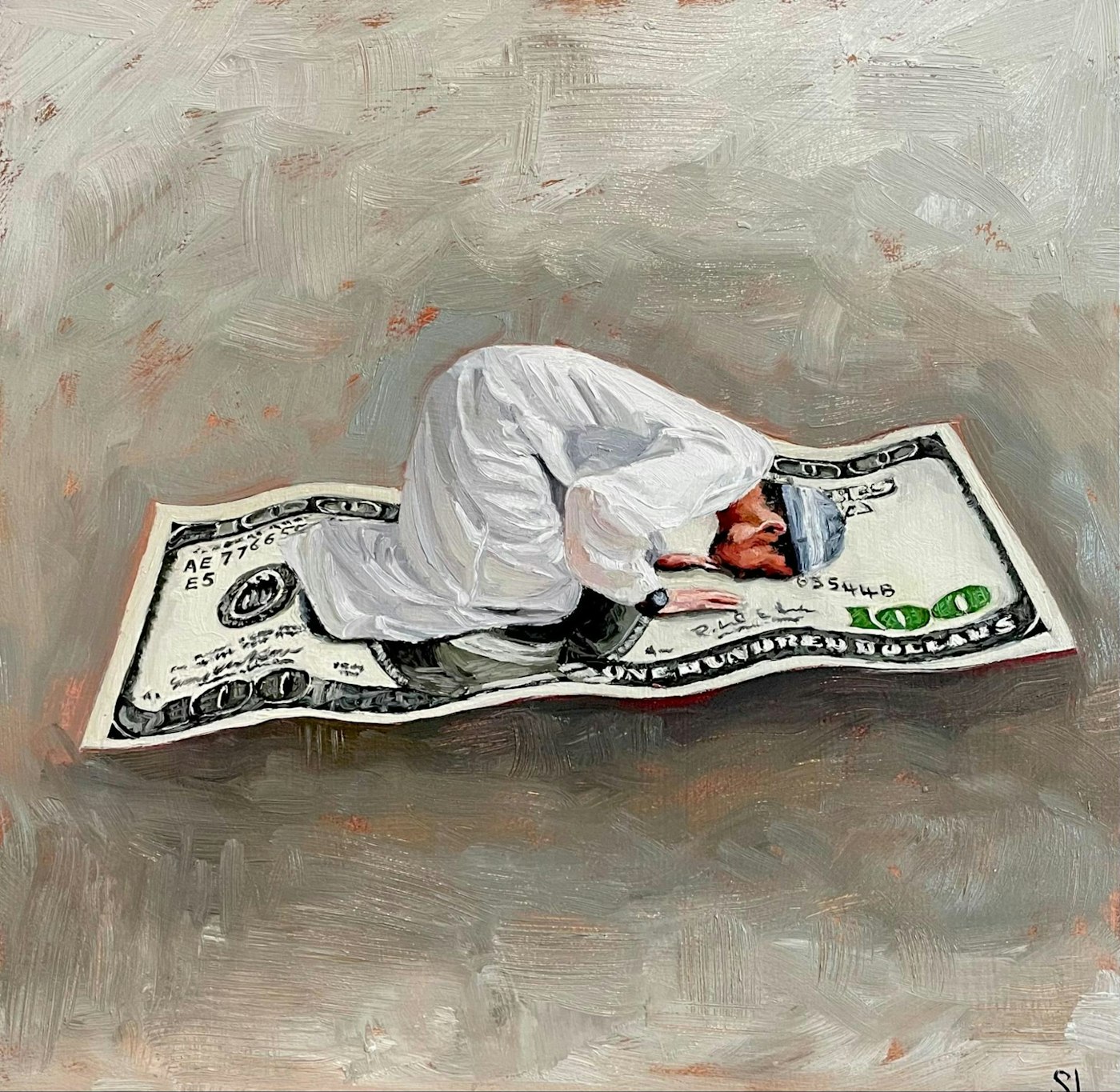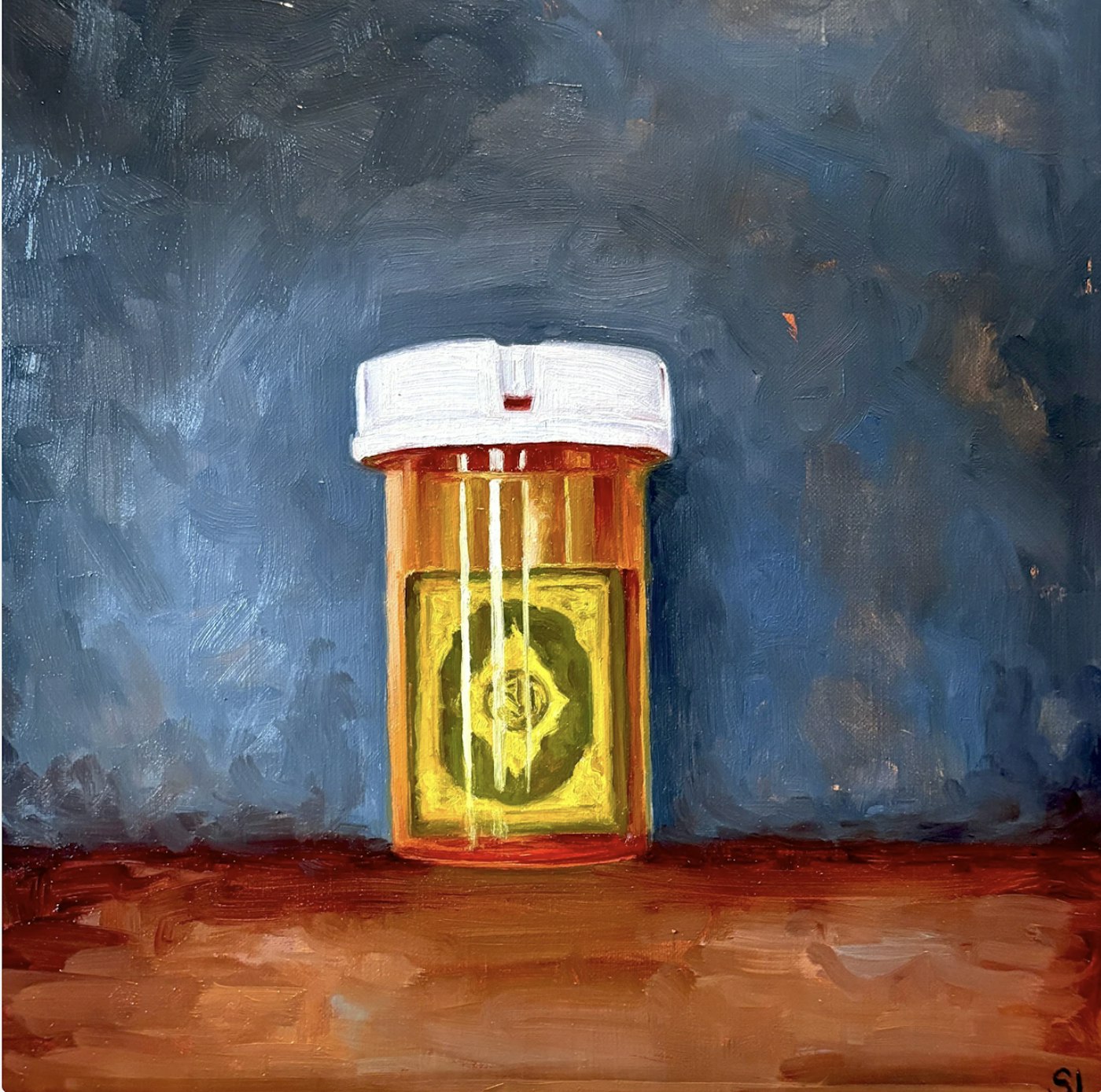In Conversation With Safia Latif: Islam and Magical Realism
by Furvah Shah in Culture & Lifestyle on 20th May, 2025

“Society must accept some things as real, but the artist must always know that the visible reality hides a deeper one, and that all our action and our achievement rests on things unseen.”
This powerful quote by renowned writer and activist James Baldwin is one that artist Safia Latif says she directly draws from for inspiration and motivation for her artwork.
Specialising in Islamic magical realism, Safia has amassed millions of likes and over 100,000 followers on social media for her intricate and striking paintings that bring magic and spirituality to lived reality. From the Holy Kabah surrounded by a field of flowers to a young boy reaching from a mosque minaret to the moon, her art serves as a calming, fresh air amongst the overstimulating social media algorithm, and her unique painting style has made her work instantly recognisable in the Islamic art scene.
Born to a Pakistani father and Jewish-American mother who converted to Islam, Safia was raised in a largely-white community of Western Maryland. She first looked at art as a hobby, inspired by the women in her family. However, it was her studies into Islam and the Middle East that caused her to pick up the paintbrush again and brought her to where she is today. Amaliah spoke with Safia over Zoom from her quaint art studio to explore her career so far, inspiration for her work and advice for other aspiring artists.
How did your artistic journey begin? When did you first start creating and then sharing your artwork?
I have always had an affinity towards art since I was young, but it was a hobby. My mother painted, and my grandmother painted, but it never evolved into anything more. I never considered it as a career for myself until I was doing my PhD and took a class at Harvard Divinity School. For our final, we could do something creative, and I opted to do a painting. That painting was one of the first ones I posted, and someone reached out to ask if it was for sale. It sort of took off from there and became a career, so I abandoned academia and began art full-time.
Where do you find inspiration for your pieces, and what does your creative process look like?
The process is very elusive and hard to pin down. Usually, I think in images, and something will appear in my mind, or I’ll be reading, listening or speaking, and some of those images are compelling enough to explore further. Usually, it’s a challenge as these images don’t exist in real life, which is an example of life imitating art, but it often involves reference photos, sketching, and then painting in my studio. The image I had in my mind isn’t always the final painting, I don’t go in with a pre-determined or fixed meaning.
How has your background in Middle Eastern Studies and religion shaped your current body of work?

Being born and raised Muslim means I approach my art with an insider’s perspective, but it’s not proselytising (attempting to convert others). I have Muslims and non-Muslims who follow me, and I think they appreciate the authenticity of my work. If we think of how Islam moved as a force throughout history, it wasn’t proselytising but appeared as something powerful and compelling that people are drawn to, which is how I approach my art.
So much Islamic art leans towards geometry and calligraphy — how did this fusion of Islamic art with magical realism come about?
When I was looking to define my art style, I landed on the term by historian Marshall Hodgson called ‘Islamicate, ’ which I learned in my master’s studies and, for me, refers to the non-legal aspect of Islam and the lived experiences of Muslims in society. I felt Islamic magical realism best described what I was doing, but there’s a quote by James Baldwin which says “Society must accept some things as real, but the artist must always know that the visible reality hides a deeper one, and that all our action and our achievement rests on things unseen.”
For me, this means that beyond a physical reality, there is an unseen world, and the role of an artist is to show that to others. If I’m saying anything with my art, it’s to stop and reflect on this unseen reality. The realism refers to the everyday, and that’s where I want to insert the magic.
When did you first find people really resonating with your pieces? When did they first begin gaining traction and virality?
The first piece that went viral was around five years ago and was titled ‘Prayer on a Plantation.’

I’ve had several pieces go viral since then, but I don’t understand virality and the algorithm. That’s not something I’m thinking about when I’m painting, as when I post something that I might not like as much, that piece goes viral, and when there’s a piece that I personally love, it doesn’t.
You can’t make it the focal point of what you do because then you are sacrificing the authenticity of your art. You’re being dishonest.
What are some of your favourite responses to your pieces?
When it stirs them to some type of action, like “oh, this reminded me to pray Isha” or something like that, I like it when people express how a piece moved them, resonated with them or had an impact on their psyche. It’s very humbling. I get a lot of great comments, and I get a lot of comments that are mean. But if you’re in the online space, you must have a tough skin and deal with that.
Do you have any favourite artworks that you’ve created over the years?

Idolatry
It’s called ‘Idolatry’ and it’s a figure of a Muslim man and he’s praying on a $100 bill. I remember the process as the image came to me when I was in the shower (if you have artist’s block, go take a hot shower). I knew I had to paint it, and the process of finding references, sketching and painting was easy. Sometimes, it’s a struggle, as you might have to start again, but I love how easy that one was.
I also love my piece titled ‘Wellness’, which depicts a Qur’an in a prescription bottle. That one is very personal to me because my father is a psychiatrist, and I remember seeing an empty pill bottle on my kitchen counter late at night, and I had a mini Qur’an that I put inside and made it into a painting.

Wellness
How do you want audiences to resonate with your art? What is your intention as an artist, or is it up to the viewer?
Just to show the truth. I don’t go in with a pre-determined fixed meaning or message I want to convey. Sometimes, it’s just a subtle feeling or idea. Then, I post it online, and people receive it in different ways that expand the meaning.
It’s a very different experience seeing a painting in person, as you see the physical presence of the painting. You can see the texture of the piece, and there’s a relationship between the viewer and the painting. That isn’t happening online, so I’m always pleasantly surprised that the art is received well and resonates with a viewer.
If you could give one piece of advice to someone trying to carve out their own path as a Muslim artist, what would it be?
Be authentic. You’re going to find inspiration from elsewhere, but I choose to mute other artists so I don’t impact my own creative process. Paint what you want, not what you think your audiences want or what the algorithm will think is trendy. You want to create something long-term, so put your phone down and create something real and true to yourself.
You can follow Safia at @safialatifpaintings and shop for her art at www.safialatif.com.
Furvah Shah
Furvah Shah, 23, is a culture and lifestyle journalist currently working at Cosmopolitan Magazine. Being from a Pakistani, Muslim background, Furvah is passionate about diversifying representations of women, Muslims and ethnic minorities within the media and passing the microphone to underrepresented communities.